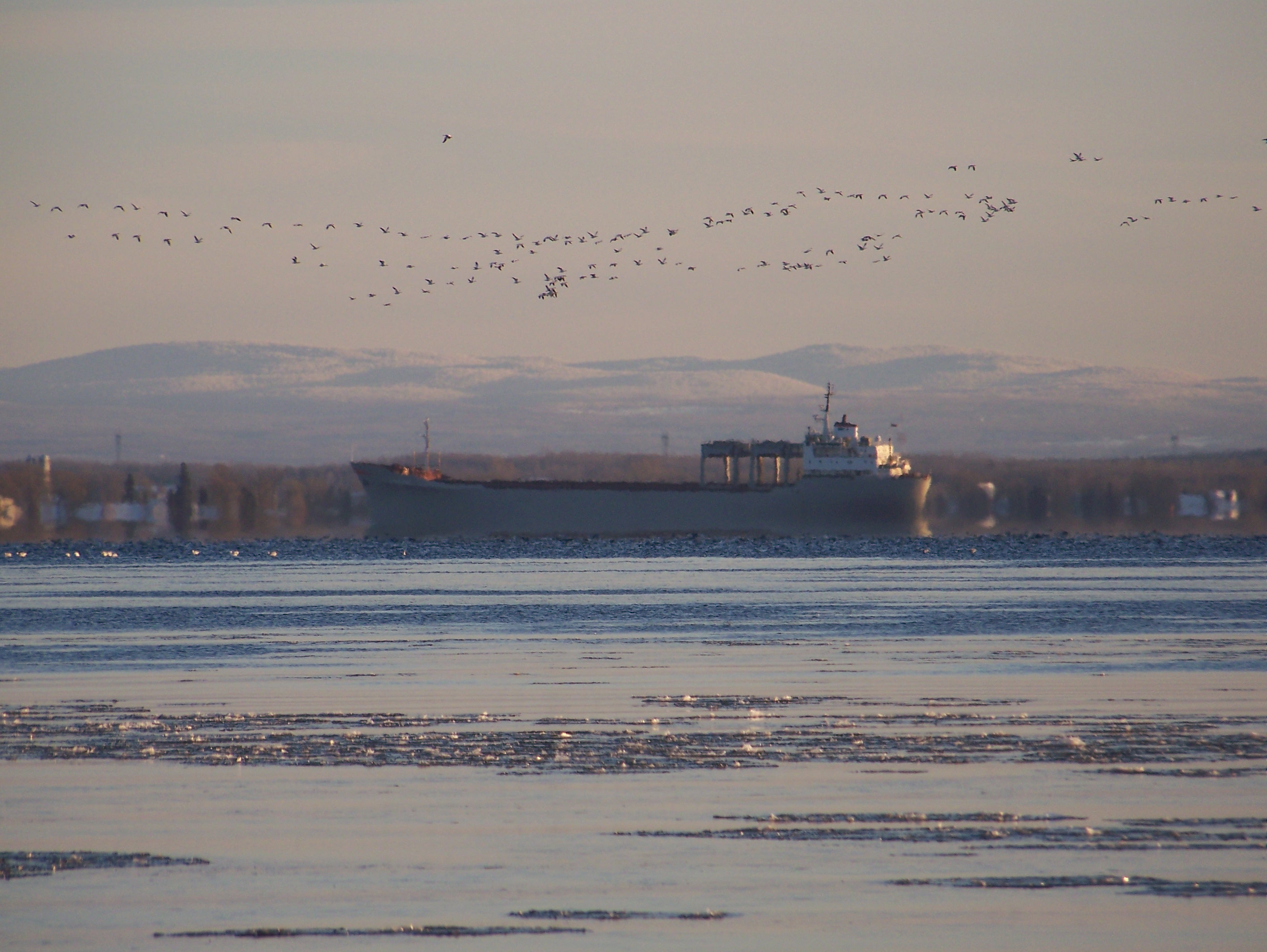As promised, here are a few pictures I took while snorkelling with my friend Eric in July and August. As the fishermen among you know, August isn’t the most reputable fish-catching month, so you have to find other things to do. This activity is accessible to just about anybody who can afford a pair of fins, a snorkel and a mask and is a great way to kill the heat on those muggy mid-summer days. Our budget doesn’t allow us to use the top underwater camera on the market (Jean-Coutu disposable) but the water is so clear that image quality is still reasonable. I also scanned these from the original prints so I lost a bit of quality there as well.
Â

Â
Above is an example of a smallmouth bass patrolling a grass bed on a sandy flat right next to an underwater island. The sandy bottom beneath the weed offer crayfish and freshwater shrimp an ideal place to hide. Bass such as this one are surprisingly territorial and are quick to fearlessly investigate intruders. This flat area is about the size of a two football fields. It is located adjacent to a clearly delineated row of piled rocks which range from a foot to 3-4 feet in diameter. The grass bed itself sits in about 12 feet of water while the rock structure, which I believe to be an old road, is shallow enough to hit with a motor. In the picture you can see wave shadows on the bottom. The stillness of a picture doesn’t nearly come close to duplicating what this looks like in motion. Everything seems to be alive and moving underwater; even the rocks and weeds. The bass certainly stand out though and quickly make a snorkeller feel like a beached whale. They are extremely quick, agile and graceful. They manoeuvre like fighter jets around us while we look more like jumbo commercial planes. One thing that strikes me every time I enter the water is how quiet it is down there. It’s a very relaxing and serene environment and it sucks you in. Visibility is amazing when the water is clear. You can see at least 50 feet away in all directions. It’s absolutely beautiful.  The spots we visit regularly all resemble each other in what the natural environment offers smallmouth bass and eels. That is, accessibility to deeper water within reasonable distance, plenty of large and mid-sized boulders and rocks, a weed line transition beside the underwater island and flat grass beds. These environments attract a multitude of larvae, crayfish, minnows and crustaceans that eels love to dig up for an afternoon snack. I have a bunch of these “underwater Islands, rock piles†whatever you want to call them, programmed on my GPS so we can return to these day after day. In September and October we bring our fishing rods with us and throw tube jibs around. They mimic crawfish quite well and I’ve caught my two biggest smallmouth bass (21 and 22 inches) doing just that. After a few dives, we actually start recognizing individual fish. Some are much braver than others and quickly approach us the second we jump off the boat. Others are shy and tend to sneak up behind us and follow discretely until we turn around. They are all very curious animals that quickly adapt to a diver’s presence. After a few minutes if we sit still they allow us to watch them search and hunt down prey. We become part of their environment. A very odd looking part but a part nonetheless.    Â
   Â

If you look below that goofy looking character you’ll notice the rocky environment the bass like to live in I was mentioning above. This type of structure gives provides the fish with ample feeding opportunities and also allows them to take cover should a musky or pike come wandering by. They especially love the transition areas. Whether it be transition from large rocks to small rocks, a weed line next to a flat area, the end of a rock pile (in this case an old road) or the weedless area between two weed beds, smallmouth will relate to it. They patrol expansive areas in groups of 3-6 fish looking for food.

This picture gives you an idea of just how close we can get to these fish. I’ve actually touched one more than once. The first time diver is usually surprised at first because the fish can give off the wrong impression that they want to attack. After a while you just tend to enjoy the moment. They really can’t hurt a person even if they did try. This one was among the most aggressive. He looked bigger and bulkier than the others and wasn’t impressed by the camera lens at all. To give you an idea he’s roughly the size of a football.  Â

Here is an eel searching for anything to eat in the nooks and crannies between rocks. When you see an eel doing this you can almost be sure a bass isn’t too far behind. The only explanation I can think of is that eels probably scare crawfish away from holes and the opportunist smallmouth gets an easy meal.
Snorkelling is a fun and inexpensive way to beat the summer heat. If there’s one advantage of the spread of zebra mussels it’s that they have cleared up the water considerably. It’s a great way to learn about the freshwater environments in our backyards and it provides one with the sense of adventure of discovering new grounds. We make a day out of it by bringing a lunch and other things to keep busy in the boat like a book or a guitar. Kids and adults love to do it too. I really suggest you go out and try it.
Â







